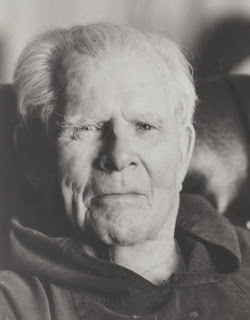Practicing Catholics are very familiar with the Salve Regina prayer by the time they are teenagers, if not earlier. It is one of the most used prayers to the Blessed Virgin Mary, besides the Hail Mary.
We do not know for sure how long ago this prayer was translated into Chamorro. We know from early historical accounts that Sanvitores translated many prayers, the catechism and some hymns into Chamorro from the first days of his arrival in 1668. Maybe the Salve Regina was one of them.
Many prayers are set to music, and this is one of them. The melody sung by Chamorros for this prayer is borrowed entirely from a Spanish melody, well-known in traditional, Catholic Spain.
ANTIPHONAL SINGING
The real custom and tradition is for the people to sing this antiphonally. That means one side of the church will sing one line, then the next line is sung by the opposite side. Usually our churches have just two sets of pews (benches), left and right with a middle aisle separating them.
I would get goose bumps listening to our older people sing this back in the 1960s and 70s. I didn't understand the words back then, but it still made a deep impression on me.
THE RECORDING
Numerous language notes follow at the end of this post.
Si Yu'us un gineggue Raina yan Nånan mina'åse', (1)
(God defend you Queen and Mother of Mercy,)
(Hail Holy Queen, Mother of Mercy,)
lina'la', minames yan ninanggan-måme.
(our life, sweetness and hope.)
(our life, our sweetness and our hope.)
Hågo in a'agang ni man ma destilådon famagu'on Eba.
(You do we call, the exiled children of Eve.)
(To thee do we cry poor banished children of Eve.)
Hågo in tatanga, man u'ugong yan manåtånges ham
(You do we desire, groaning and weeping)
(To thee do we send up our sighs, mourning and weeping)
guine gi sagan lågo. (2)
(here in the place towards the sea.)
(in this valley of tears.)
Gusse' nai pues Saina abogådan-måme
(Quickly then Lady our advocate)
(Turn then most gracious advocate)
leklek mågi ennao i man yoåse' fanatan-mo
(turn here that merciful look of yours)
(thine eyes of mercy toward us)
ya despues de este i man ma destilådon-måme
(and after this our exile)
(and after this our exile)
na' li'e' ham nu i matunan finañagu-mo as Jesukristo. (3)
(make us see your blessed child Jesus.)
(show unto us the blessed fruit of thy womb, Jesus.)
Asaina sen yoåse'! Asaina Yiniusan! Asaina mames na siempre Bithen Maria! (4)
(Most merciful Lady! Godly Lady! Sweet and ever Virgin Lady Mary!)
(O clement! O loving! O sweet Virgin Mary!)
Tayuyute ham Sånta Nånan Yu'us para in merese kumonsige i prinemeten
(Pray for us Holy Mother of God that we may merit to obtain the promises)
(Pray for us O Holy Mother of God that we may be made worthy of the promises)
i Saina-ta as Jesukristo. Amén. Jesús. (5)
(of our Lord Jesus Christ. Amen. Jesus.)
(of Christ. Amen.)
NOTES
(2) Sagan lågo. In Chamorro, lågo always means "in the direction of the sea." It makes sense, then, that lågo can also mean a place far away, separated from us here in our homeland. Thus, a place of exile, far from us and separated from us by the vast ocean, can be sagan lågo.
(3) Finañago. Fañågo means "to give birth to," so finañågo (noun form) literally means "that which was birthed," that is, a child.
(4) Yiniusan. This means "divine," "godly" or "godlike." It comes from the word Yu'us or "God." The original Latin of this prayer says pia, which can mean many things! It can mean "dutiful, conscientious, faithful, respectful, righteous, good, upright." We get the English word "pious" from it. In a religious sense, "pious" can mean many things, as well! It can mean "godly, holy, saintly, devout, reverent." The English version calls Mary "loving" in the sense that the pious loves God.
(5) Jesús. An old Spanish custom to sometimes add the name of Jesus at the end of a prayer. Perhaps it comes from a strong devotion to the Holy Name of Jesus. It isn't done in English-speaking Catholic cultures.
ORIGINAL SPANISH MELODY



























